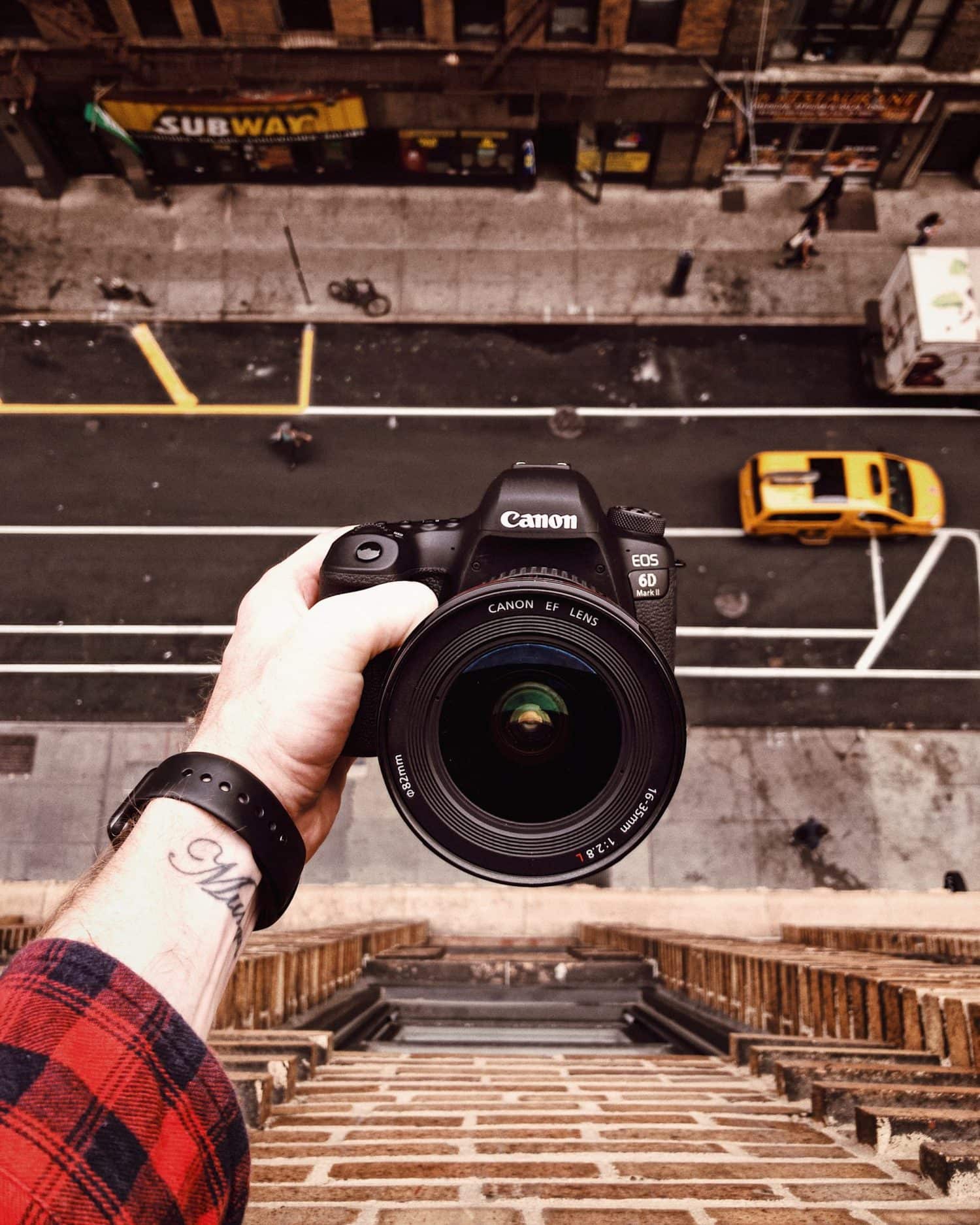Each photographic brand has its own characteristics, its types of lenses, its own terminology and indecipherable acronyms, what a horror right?
This often complicates things and since you already know that what I like is to make it easy for you, in this article I am going to gut the Canon brand in terms of cameras, lenses , acronyms and other hieroglyphs that you can come across.
(If you're simply looking for the best Canon SLRs , I'll leave them to you in the linked article.)
While I prepare to write this mega-guide, I have put on background music to warm up the engines. If I could share it with you that would be great.
Wait! Of course I can
Here it is!
Come on, turn up the volume and let's get down to business.
CANON CAMERAS
Canon is a Japanese brand founded in Tokyo in 1937,although to talk about its beginnings, we would have to go back to 1933, where what today are Canon cameras began to take shape. Undoubtedly one of the most prestigious brands in photography, leader in the DSLR (reflex cameras) market, which also has other types of cameras, lenses and even printers , something that other brands cannot boast of.
But let's focus, I'm going to talk to you about the cameras that Canon offers, on the one hand, differentiating the types of cameras it has, and on the other hand, I'll leave you with some recommendations designed for a specific audience.
WHAT CANON CAMERA TO BUY?
Before continuing, if you are looking to buy a camera and you want a personalized recommendation, I have prepared a free tool that you will find in the link so that you can tell it what you need and it will take you to the camera you are looking for.
If you want information on a camera, be it an old or current model, you will find it in the camera encyclopedia that I have created for all my readers, if you don't know it, please don't miss it, it will surely be very useful for you . In the event that you are looking for a Canon model, go directly to the selection where you will find all the Canon cameras . And now you can filter according to your preferences.
If you're looking for more general recommendations, read on. I'll leave you with them soon.
Speaking of buying a camera... Pay attention that this interests you. Many times, the camera of our dreams is beyond our possibilities. As much as we know that it is for us, that we are going to squeeze all its functions and that the only thing that is out of our reach is the price, the pocket does not always reach. What a job, right? The good news is that there is a fabulous market for second-hand cameras, which you can use to buy yours as long as you follow these tips (so you won't have to regret it later).
Next, we are going to see the different types of Canon cameras that are currently on the market. As you can see in the image there are EOS, EVIL (or mirrorless), compact and instant SLRs.
CANON SLR CAMERAS
Canon DSLRs have been their flagship and what has kept them market leaders.
CANON FULL FRAME SLR CAMERAS
Let's start with the Full Frame SLRs, the full-sensor ones, which are the ones we are going to see more in passing because full-sensor cameras are aimed at a very specific audience. Mainly for professionals and very advanced and demanding users.
In this image you can see the most recent models.
If you have any doubts about whether these cameras are for you, first answer yourself "Do I really need a full frame camera?" or read our reflection on which is better APS-C or Full Frame.
If you decide yes, but you are just an amateur user, I definitely recommend the Canon EOS 6D, you can see all its features in our review. If you want Wi-Fi, 4K video and higher resolution, and can afford it, then go for the EOS 6D Mark II.
APS-C SLR CAMERAS
APS-C cameras are the ones that are not full frame. Specifically, those of Canon have a crop factor of 1.6 . To give you a more specific idea, you can see a comparison between the different sizes of sensors in the following graph.
You can go deeper into the types of sensors if you have interest. But basically, what you're most interested in knowing is that a bigger sensor captures more light and more detail, although as I was saying a moment ago, not everyone needs a full frame camera.
Let's go with the most recent Canon APS-C format models, I'll put them with the link to the reviews that we've been dedicating to them, some are missing but you'll have them available very soon, we're working on it, for now, you can find them at our encyclopedia of cameras.
- Canon EOS 4000D: A very, very cheap SLR to start with, with 18 megapixels, Wi-Fi connection and Live View Mode.
- Canon EOS 2000D : Ideal as a first SLR, a step up from the 4000D, 24 megapixels, 9 autofocus points, Wi-Fi and NFC connectivity, Live View Mode.
- Canon EOS 250D : Light camera, to begin with but with more advanced features than the previous two, for example 4K recording, which you will not find in cameras of this price range, tilting and touch screen, 24 megapixels, Wi-Fi connectivity and Bluetooth.
- Canon EOS 7D Mark II: For lovers of speed, 65 focus points, body sealed against water and dust, GPS and multiple exposure are just some of its features. Very soon we will have the complete review, for now, more information in our encyclopedia of cameras.
- Canon EOS 77D : Without being completely professional, it is among the cameras for somewhat "advanced" amateurs: 24 megapixel resolution, 45 focus points, tilting screen, Full HD "slow motion" video, image stabilization of 5 axes in video, and of course, Wi-Fi and Bluetooth connectivity.
- Canon EOS 800D: 24 megapixels, 6 fps, Full HD videos, optical viewfinder and Wi-Fi connection. Very similar to the 77D but without a top screen or specific dial. It is ideal for those who have just started but are clear that they are going to stay in photography for a long time.
- Canon EOS 850D: Compact and light, touch screen and variable angle, 24 megapixels, 7 fps, 45 cross-type focus points and 4K videos are some of the features that make it an all-rounder for photography and video. If you want to know more, see sample photos and video review, for example, go to the Photographer's Blog encyclopedia of cameras.
- Canon EOS 90D : Designed to capture moments of action, such as birds, wildlife or sports, for example. 35 megapixels, fast shutter speed up to 1/8000s, 100% coverage optical viewfinder, vari-angle touch screen, advanced autofocus system and 45 cross-type AF points, Wi-Fi connection or 4K video make it the most advanced within the amateur user range. More specs in the camera encyclopedia .

CANON EVIL CAMERAS
Canon wasn't exactly known for its mirrorless cameras, but I have to say that they have stepped up and offer some really interesting models. Let's see these mirrorless from Canon.
CANON EVIL FULL FRAME (EOS R) CAMERAS
Canon has the full-frame EOS R range for advanced stills and movies. They work with RF mount lenses, but there are adapters with which EF and EF-S mount lenses can also be used. Later I will talk to you in more depth about mounts and compatibilities.
- Canon EOS R5: For photography and cinema, 45 megapixels, 8K recording, RAW videos, 20fps, 8-stop image stabilization, 5940 focus points. It exceeds 4,000 euros, so fans, please refrain ? This camera is clearly a professional camera.
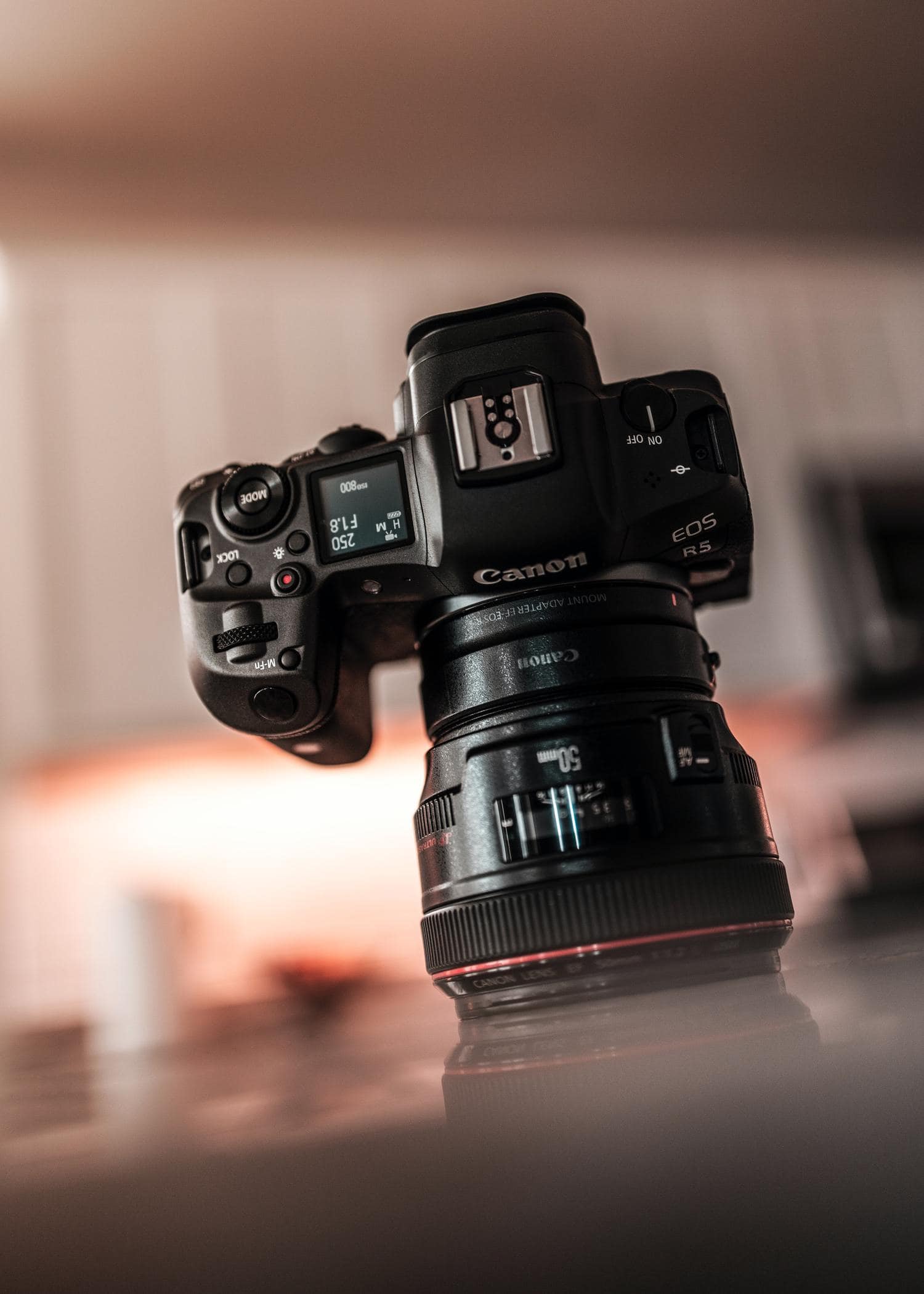
- Canon EOS R5 C: Combine the best of the Cinema EOS range with all the benefits of the EOS R series to capture stunning 8K video and 45MP photos. It's the smallest Cinema EOS camera, ready for anything.
- Canon EOS R6 Mark II: The new professional camera that combines performance and quality. Ideal for those who do equal parts photography and video and just want a camera.
- Canon EOS R6: It differs from the R5, in addition to the price (the R6 is cheaper), mainly in the megapixels (20 in this case), which records in 4K and does not have a superior screen, although it offers more ISO and The battery lasts a longer number of shots. It is still clearly a camera intended for the professional world. In this article we tell you our impressions after testing the R6.
- Canon EOS R3: A camera prepared for action professionals, ideal for sports, nature and photojournalism. 30 fps and fast, accurate subject detection and subject tracking.
- Canon EOS R: We continue with another camera designed for the professional photographer, although in this case it can also be contemplated by very advanced and very demanding users. 30 megapixels, burst shooting at 8 fps, 4K video, more than 5000 focus points are some of its features. You can see much more about the Canon EOS R in the encyclopedia.
- Canon EOS RP: Now we are talking about a Full Frame camera for the amateur (advanced, yes). Here is my review in video mode.
CANON EVIL APS-C CAMERAS ( EOS M )
The other range of EVIL or mirrorless cameras from Canon is the EOS M, in APS-C format. They work with the EF-M lenses designed specifically for this range, but with the EF-EOS M Mount Adapter you can also use the EF and EF-S. These are the models:
- EOS M5: Features of an SLR in a more compact body. 24 megapixels, especially fast autofocus, 5-axis image stabilization, tilting screen, 9 fps ideal for fast action and connectivity (Wi-Fi, Bluetooth, NFC, etc.). You can see the full review of the Canon EOS M5 here.
- EOS M6 Mark II: 4K videos, 14 fps, 33 megapixels, slow-motion video and great low-light shooting capabilities at a relatively low price make it a very interesting camera.
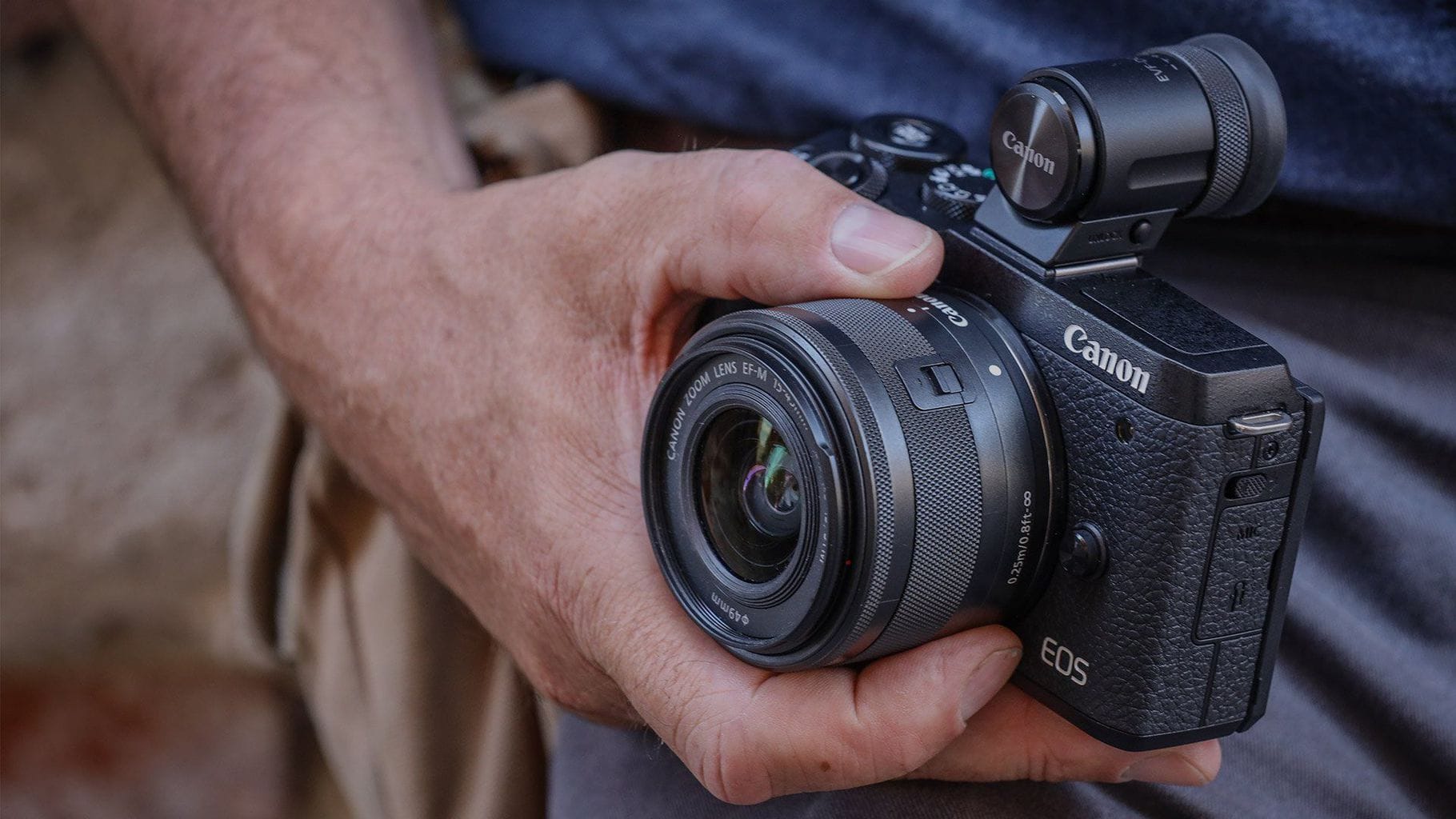
- EOS M6: Practically the same as the EOS M5, except that the M6 does not have an electronic viewfinder because they opt for a lighter and more compact size and the screen is a bit smaller. You can see the review of this Canon EOS M6 that we published in its day.
- EOS M50 Mark II: Evolution of the mythical EOS M50 is ideal for Vloggers and travelers, small and compact with excellent photography and video technology. 4K video, 24 megapixels, 10fps, connections and tilt and touch screen.
- EOS M200: One of the best EVIL for both beginner and advanced amateur, 24 megapixels, advanced autofocus system with eye detection, 6 fps, 4K recording, Wi-Fi connections and flip-up touch screen. Another very apt camera for vloggers.
CANON BRIDGE CAMERAS
Bridge cameras are designed for those who sigh for an SLR or EVIL but flee from changing lenses. Although they do not want to give up the different focal lengths either, since they like to photograph from macro to distant birds through portraits or landscapes. These are the bridge cameras currently offered by Canon:
- PowerShot G3 X : Its dust and splash resistant body, its advanced video functions, image stabilization for photos and video or Wi-Fi connection make it a most interesting camera for the amateur photographer who wants an all-terrain camera and that allows you to develop all your creativity.
- PowerShot SX70 HS: From macro to craters on the moon. This camera is capable of capturing details of the moon with its 1300mm equivalent superzoom. You can read in this review what the SX70 HS is capable of.
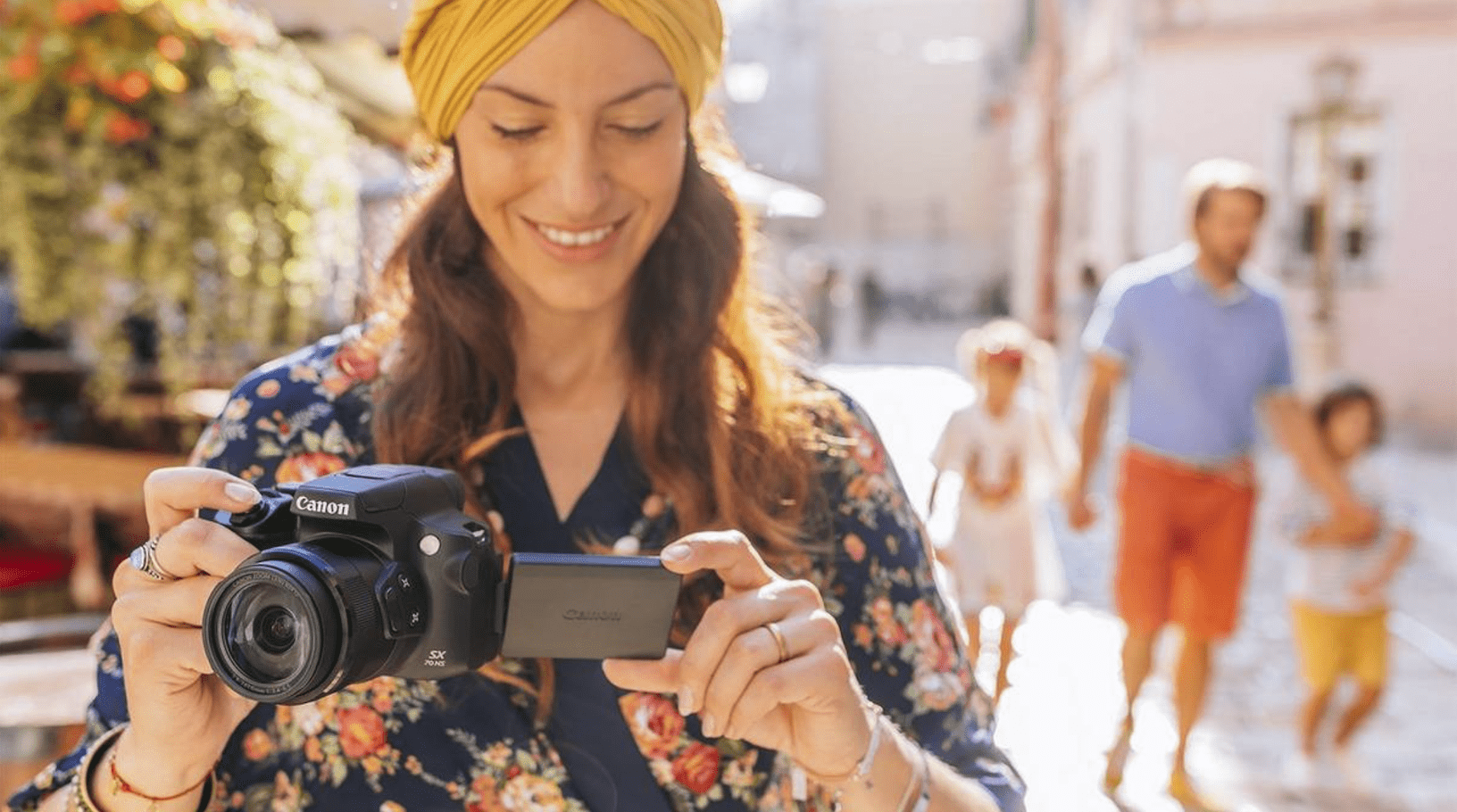
- PowerShot SX540 HS : Photography from a landscape to the farthest with an ultrazoom equivalent to 1,200mm, there is nothing. In addition to other advanced specifications such as the histogram , the 5-axis stabilizer or manual adjustments. A camera for those who seek versatility above all else. You can see the review of the PowerShot SX540 HS , which we did at the time.
- PowerShot SX430 IS: A simple, small and versatile camera to always carry with you. With 45x optical zoom and creative modes. Here its complete specifications.
And if you want more cameras with a lot of zoom , here they are.
COMPACT CANON CAMERAS
CANON ADVANCED COMPACT CAMERAS
For users who want neither an SLR nor an EVIL, but with a high level of photographic demand, the Japanese brand has the PowerShot G series. Compact cameras for expert photographers looking for a SLR in a small and light body. The number that accompanies the G goes from more advanced (G1) to easier (G9) to serve as an orientation.
- PowerShot G1 X Mark III: Sealed body, built-in ND filter, image stabilization in a compact camera that combines speed, quality and resistance. An all in one. The only drawback is that it is not for those who are looking for a lot of zoom.
- PowerShot G3 X: Offers the flexibility of a 25x zoom bridge camera with tremendous power for both photography and video.
- PowerShot G5 X Mark II: It is not sealed but it has a Timelapse function and an ideal screen for self-portraits and Vlogging. Also 4K videos and fold-out electronic viewfinder.
- PowerShot G5 X: Optical image stabilization, high-resolution electronic viewfinder, Full HD video, articulating screen, Timelapse function, built-in automatic ND filter, Stars mode and handheld HDR. For the most nocturnal and creative.
- PowerShot G7 X Mark II: With a 1.0-type sensor, bright f/1.8-2.8 lens, it's a compact with an SLR heart, ideal for vloggers (although the videos are Full HD), traveling photographers, and strays. You can read the G7 X Mark II review to get to know it better.
- PowerShot G7 X Mark III: compared to the previous one, the G7 X Mark II has 4K videos, allows longer exposures, improves the processor and the burst.
- PowerShot G9 X Mark II: For the hobby user, with a bright lens, 8fps burst shooting and wireless connectivity.
SIMPLE COMPACT CANON CAMERAS
Canon also has a range of very compact and simple cameras, to always carry in your pocket and to point and shoot with zero complications.
CANON INSTANT CAMERAS
Finally, the brand has a range of instant cameras for those who want to have their photograph printed at the moment, with the charm of old Polaroids. Excitement and fun guaranteed.
- Zoemini S2: With a mirror for perfect selfies, a ring light to look better in them and a remote shutter with the Canon Mini Print app, so you don't have to stretch your arm like the Incredible Elastigirl. 8 megapixels, Bluetooth connectivity, capture modes and Micro SD card.
- Zoemini C: A somewhat more basic model, with no connections, no remote shutter, no fill light, and smaller selfie mirror. Of course, it is also cheaper.
Both can be printed on sticky paper (I've already told you that fun was guaranteed ? ). And if you wonder, no, you don't have to change ink cartridges. Uses 2" x 3" Canon ZINK™ "Ink-Inked" Photo Paper which you can purchase for N/Aa pack of 50 sheets.
CANON CAMERAS FOR…
In this section I intend to show you several classifications to facilitate your search, I am not going to detail them because you have all of them described above and with their links to expand the information. Also remember that you have them all in the encyclopedia of cameras. With this classification I only intend to locate you and give you a more specific summary ? .
CANON CAMERAS FOR PROFESSIONAL PHOTOGRAPHERS
These are the cameras that Canon currently offers to the most demanding professionals:
- EOS 5D Mark IV
- EOS-1D X Mark III
- EOS 5DSR
- EOS 5DS
CANON CAMERAS FOR ADVANCED HOBBYISTS
For advanced hobbyists, the following Canon models are intended:
- EOS 90D
- EOS 6D MarkII
- EOS 6D
- EOS 7D MarkII
- EOS 850D
- EOS 77D
CANON CAMERAS FOR INITIATION
The newest is the EOS 2000D , the most economical is the EOS 4000D , the lightest and most complete is the EOS 250D and the one with the longest travel (for those who know that they are going to stay yes or yes) is the EOS 800D .
CANON CAMERAS FOR KIDS
In addition to the instant cameras in the Zoemini range that are very attractive to the older ones (who already know how to control themselves), the ideal Canon camera for children and families is the IXUS 185 model.. Be careful, it is for older children and adolescents, for the little ones, you have other cameras more suitable for them.
CANON CAMERAS WITH A LOT OF ZOOM
- Canon PowerShot ZOOM
- PowerShot SX740 HS
- PowerShot SX730 HS
- PowerShot SX60 HS
- PowerShot SX620 HS
- Canon PowerShot SX540 HS
- PowerShot SX430IS
CANON 4K CAMERAS
If what you are looking for is a video camera that records in 4K, these are the Canon models that have 4K video recording.
- Canon SLR with 4K:
- EOS 90D
- EOS 850D
- EOS 250D
- ESOS 5D Mark IV
- EOS-1D X Mark III
- EVIL from Canon with 4K :
- EOS R5
- EOS R6
- EOS R
- EOS RP
- EOS M6 Mark II
- EOS M200
- Canon compacts with 4K :
- PowerShot G5 X Mark II
- PowerShot G7 X Mark III
- PowerShot SX70 HS
- PowerShot SX740 HS
WHICH IS BETTER: CANON OR NIKON?
You can't even imagine how many times I've been asked (and continue to be asked) this question. It's no secret that I'm a Nikonista , but that doesn't mean I think Nikon is better than Canon or any other brand. Everything I think about the comparison between Canon and Nikon I tell you in the link.
CANONISTS
Speaking of Nikonists, Canonists, Fujifilmists, etc., I have something to tell you. You will have to enter the link to find out what is so important that I want to make it very clear.
CANON LENSES
This whole camera thing is fine and blah blah blah. But… what about a camera without a lens? It wouldn't do any good, would it? Well that. Now I am going to tell you everything you need to know about Canon lenses.
If you have a Canon camera or are thinking of buying one, do not doubt that this information will help you, on the one hand, due to compatibility issues, as I have mentioned a little above. On the other hand, because the offer is very extensive and surely all this helps you choose and not despair between so many frames and models because it can be quite tedious.
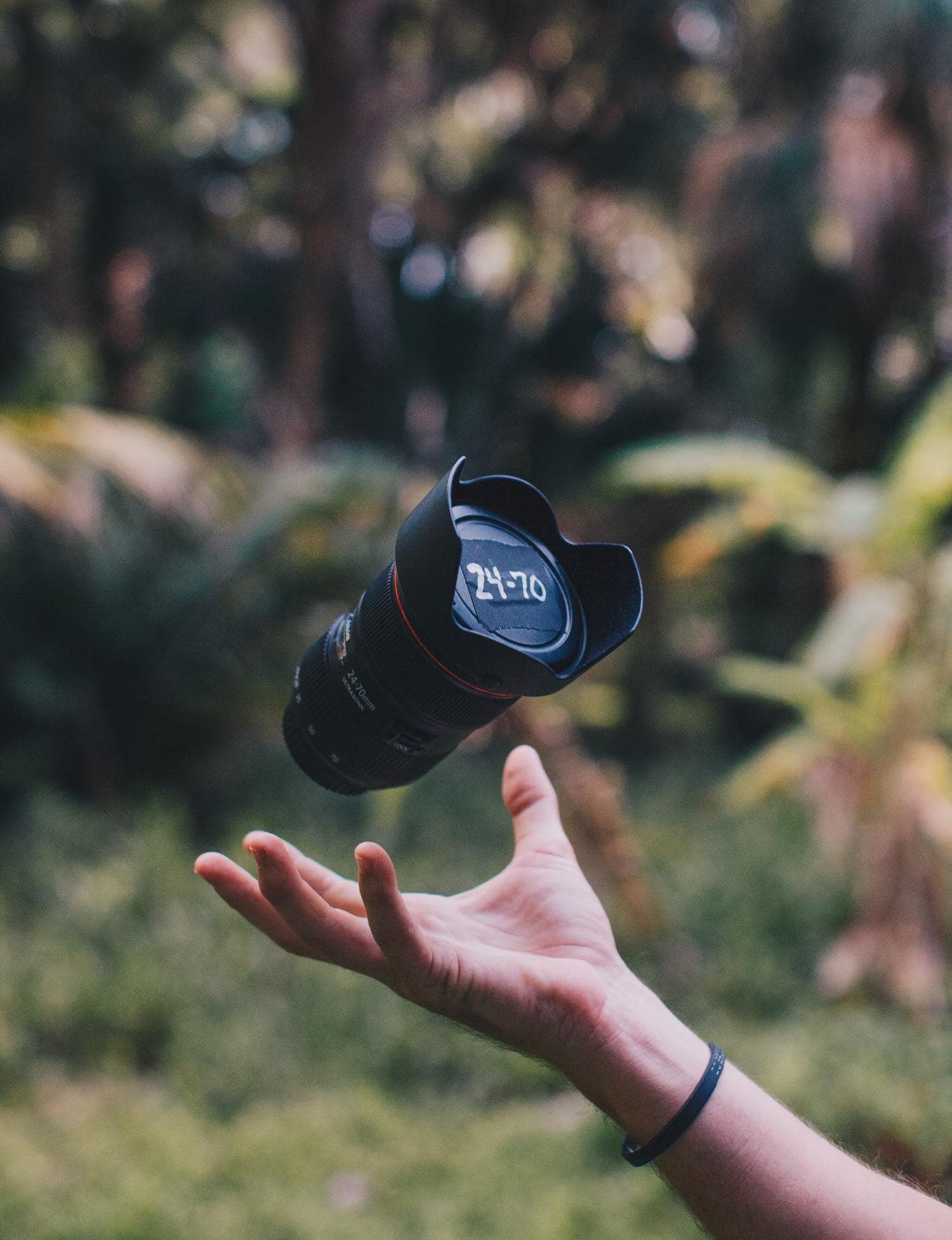
Of course, if you have a bridge or a compact you can skip this section, if not, keep reading ? .
To start, I recommend this article in which I delve into how to buy a lens , with everything to consider (whatever brand it is) and with my four favorites of all time.
And so you don't get lost, in terms of Canon terminology, here I will tell you what the specific acronyms and abbreviations of Canon lenses mean .
CANON LENS COMPATIBILITY
As you will have already verified, not all Canon lenses work for all Canon cameras. And if you didn't know, now you know. It is important that you are clear about this.
I will also talk about the fact that in some cases, despite the incompatibility, they can be used with an adapter. Now we are going to see the different mounts and their compatible lenses.
CANON LENS MOUNTS
Canon has four mount types: EF, EF-S, EF-M and the newer RF for full frame mirrorless . There is also the FD mount, but this mount is for analog cameras and lacks electronic contacts between body and lens. This type of mount is the one that was replaced with the advent of the EF mount of the digital age.
To know what kind of lenses your camera uses, the easiest thing to do is look at the indicators on the mount. Once you remove the lens, you see a metal ring on the camera, where the lens was embedded. There you can see one of these brands:




- Red circle, indicates that it is an EF mount. EF mounts are compatible with all Canon SLR cameras. Full Frame cameras can only use these types of lenses.
- White square, it means it is EF-S mount . These emerged in 2003 designed for APS-C cameras or with a crop factor. You will also see a red circle, because as I mentioned before, EF lenses can be used here as well. However, EF-S on a full frame or EF mount camera cannot be used.
- White circle, found on APS-C format mirrorless cameras and are for EF-M lenses .
- Red stripe, indicates that it is an RF mount , for mirrorless or full format EVIL. They feature faster autofocus and high-speed communication between camera and lens.
To know which mount the lens has, you just have to look at it. In the example on the right, you can see that it says EF-S. So you can use it on cameras with the white square and you will not be able to use it on cameras compatible with EF or EF-M mount.
CANON LENS ADAPTERS
Now it turns out that you have an EF-S mount camera and a bunch of EF-S lenses but you want to change cameras and be able to take advantage of all these lenses. What a chore not to be able to do it, right?
The good news is that there are adapters to be able to attach the lens to a different mount. Let's see them, see if you can save yourself having to sell them and buy new ones ? .
- EF-EOS M Mount Adapter. Allows you to connect EF and EF-S lenses to an EF-M mount.
- FD adapter.FD mount lenses, i.e. analog, can be used on mirrorless with an FD adapter like the one in the link.
- EOS-R adapter. Allows the use of EF and EF-S lenses on a camera with the EOS R system. As for EF-S lenses, however, keep in mind that the camera will produce cropped images adapted to the smaller image circle of the EF-lens. S. That is, you can use them, but you won't see the full image like with the EF lens. The good news is that the connection is complete and the objectives perform the same in terms of connectivity.
- EF-EOS R Control Ring Mount Adapter . Same as above, but in this case it has a control ring. This ring can be programmed in the camera menu to adjust parameters such as aperture, shutter speed, ISO sensitivity, etc.
- EF-EOS R mount adapter with drop-in filter. Curling the loop, with this adapter you can use filters such as neutral density or polarizer. This is especially useful when you're shooting a wide angle where the optics protrude so far that it makes it difficult to add filters.
TYPES OF FOCUS ON CANON LENSES
Canon currently uses three main types of focus motor technologies in its lenses: STM, USM, and a more conventional DC motor. This interests you, especially, to choose a lens based on whether it is more designed for photography or more for video. Let's see the differences:
- USM. This system is the fastest when it comes to focusing and also the most common.
- STM. It focuses smoothly and quietly, which makes it very suitable for shooting videos. They are also fast enough to take pictures in most situations.
- Nano USM. It's the latest in focusing technology because it combines the speed of the USM with the quiet and smoothness of the STM.
- DC. In the objectives in which the initials of the previous ones do not appear, it means that it uses a DC motor, more conventional. It has autofocus but it is neither as fast nor as quiet as the previous ones.
CANON LENS RANGES
I don't know if you've seen that some Canon lenses have a red ring around them, or a yellow one. This indicates the range. I tell you. Canon has different ranges of lenses depending on the type of camera and user:
- L-series. Lenses with a red ring are from Canon's L-series, which is designed for superior quality, professional results and maximum performance in all circumstances. As you will see, these are high-end lenses, with large apertures and a very robust construction. Obviously, they are more expensive. Ah, if you see a white Canon lens, it's because it belongs to the L series ? . There are EF and RF mount L-series lenses.
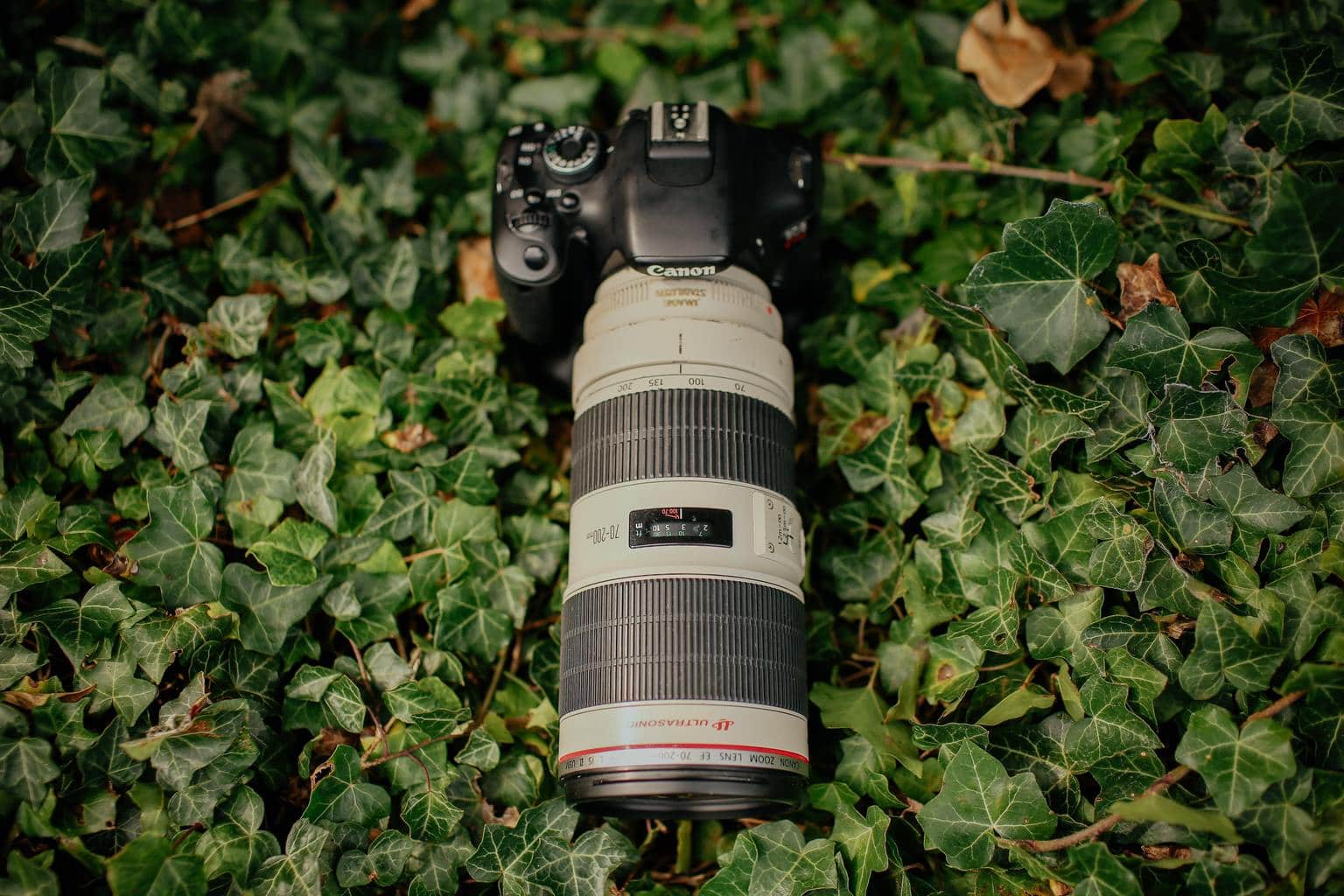
- DO series. Although you won't see it in the current catalogue, if you find a Canon lens with a green ring, it belongs to the " DO " series . They are professional lenses, with a range similar to the L series, with USM focus and protected against dust and water.
- EF series. The objectives of the EF series, more designed for the amateur user than for the professional, have a silver-colored ring or none, since the older ones did not have it. They are objectives with a good value for money and designed for not too intensive use. Within the EF series you can find:
- EF prime: quality, large apertures and compact size.
- EF Zoom: Allows you to zoom in or out of the scene by rotating the ring.
- EF Macro: as you can imagine, they are for macro photography, insects, flowers or whatever you want to photograph in real or magnified size.
- EF Tilt-Shift, feature tilt and shift. They are known as decentrable targets and have these uses.
- EF-S series. Lenses for cameras with APS-C sensors among which you will find different focal ranges. They are intended for beginners and enthusiast users.
- RF objectives. Created for the EOS R cameras, they offer higher quality and speed with performance optimized for these cameras. They are fast and bright. You can see the full range here.
- EOS M lenses. Exclusive range of versatile and compact EF-M mount lenses. There isn't as much variety as the EF and EF-S series. These are the ones currently in the catalog.
- EF-M 11-22mm f/4-5.6 IS STM
- EF-M 15-45mm f/3.5-6.3 IS STM
- EF-M 18-150mm f/3.5-6.3 IS STM
- EF-M 18-55mm f/3.5-5.6 IS STM
- EF-M 28mm f/3.5 Macro IS USM
- EF-M 32mm f/1.4 STM
- EF-M 55-200mm f/4.5-6.3 IS STM
Finally, if you find a golden ring, it indicates that it has a USM focus motor. But on later models this ring is no longer used.

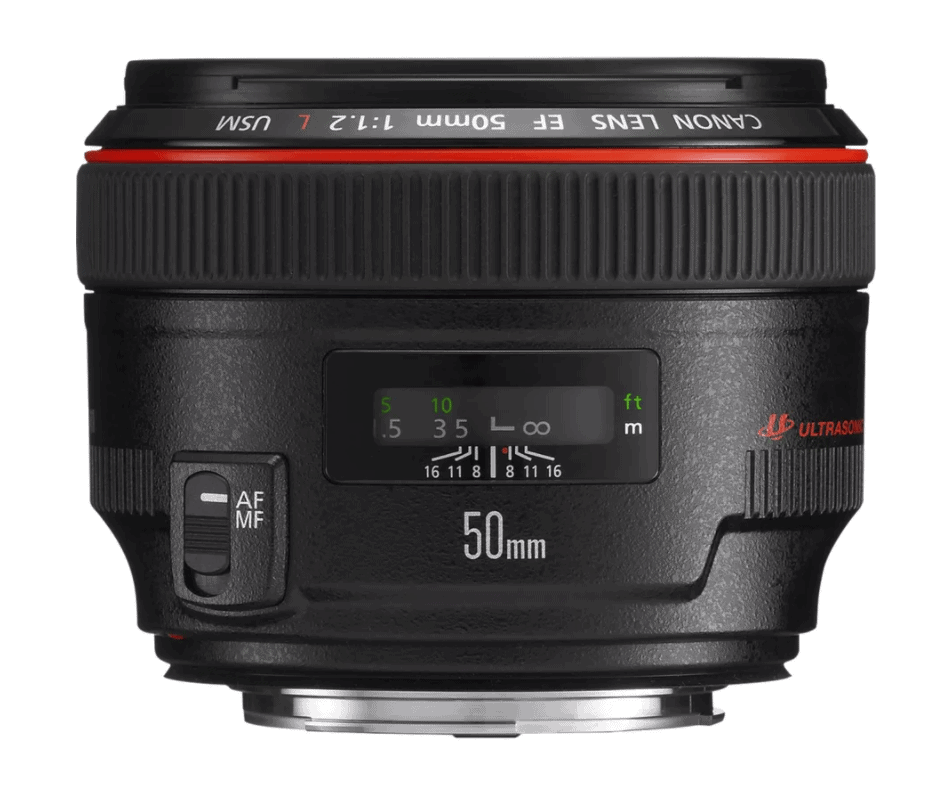
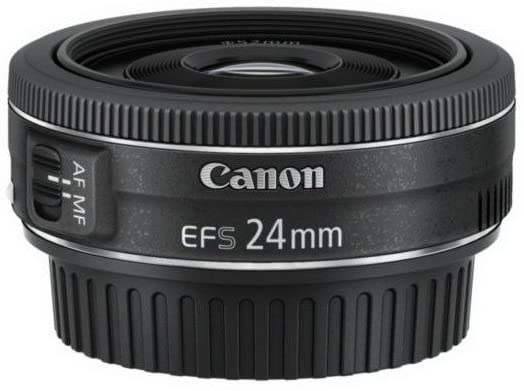
TELECONVERTERS
There are also the teleconverters, I put them apart but after the lenses because, although they are not lenses, in reality it is as if they were because they serve to increase the focal length of the L Series lenses. There are two:
- EF 1.4x III teleconverter. Multiply the focal length by 1.4.
- EF 2x III Teleconverter. Increases the focal length by 2x. That is, if you have a 200mm, make it a 400mm.
RECOMMENDED CANON LENSES
Now that I have introduced you to the different lenses that the Canon catalog offers, surely some of these articles interest you (or all):
- The best Canon lenses for your SLR
- 6 Canon angles for all budgets
- 5 very cheap Canon lenses for creative minds
- A Canon wide angle within reach of your pocket
- Pancake 24mm, a very compact, versatile and cheap lens
- Caro's team (uses Canon cameras and lenses at the amateur user level)
FLASHES FOR CANON CAMERAS
If you want a flash for your Canon camera, you can use those from the Canon catalogor to other compatible brands. We have prepared an article for you with the 7 best flashes for your Canon camera.
CANON APPS
Mobile apps aim to make our lives easier, right? This is more or less what I try with these articles, but you already know that ? . These are the Canon apps that I think can be most useful to you as a Canon user:
- Canon Guide Photo. It is a guide application to learn, with tutorials, tips or challenges, among others. Available for iOS/ Android.
- Canon Camera Connect. Connect your camera (if it has the necessary connections) to download images to the mobile, control it from the smartphone remotely or add GPS data. Available for iOS/ Android.

- Digital Photo Professional Express. The last step in a photograph is editing, for this you have this Canon application with which you can reveal RAW files on your smartphone or iPad. Available only for iOS.
Hereyou can see them all.
CANON AMBASSADORS
Finally, after all this (necessary) bullshit, I want to leave you with a more creative and inspiring stop: Canon's ambassadors. Brand ambassador photographers using Canon equipment to capture their spectacular images. There are of all genres and disciplines, from all continents and for all tastes. I will only tell you that you can learn something from everyone or get inspiration, which is not little.
Now yes, friend, we have reached the end of this Canon mega guide to the (melancholic) farewell rhythm of the fantastic Eagles .

